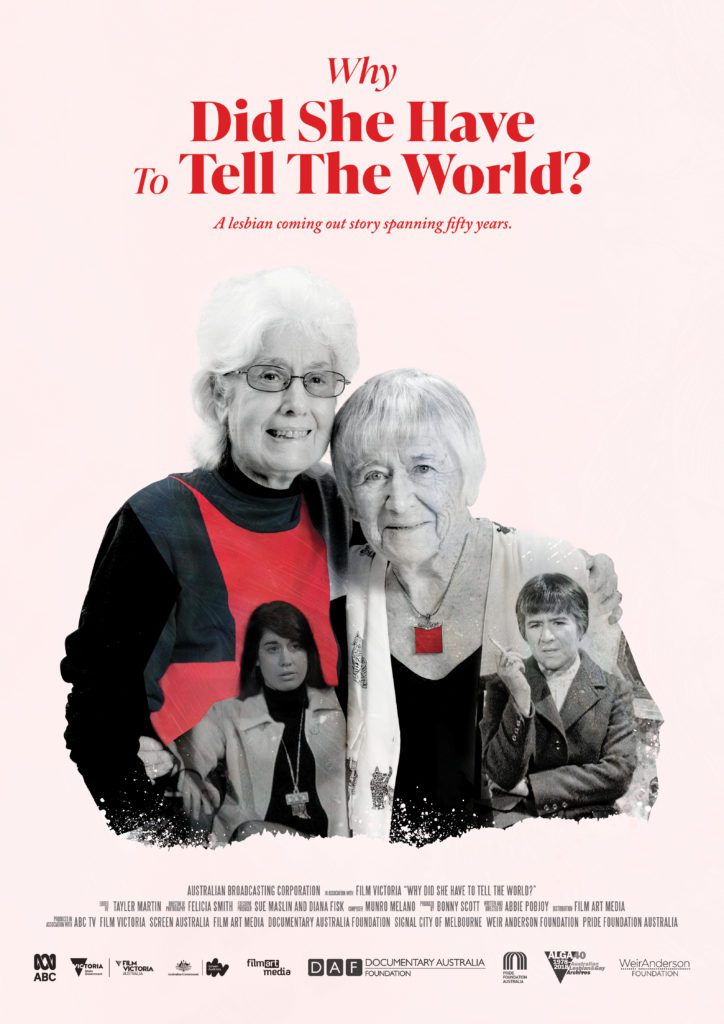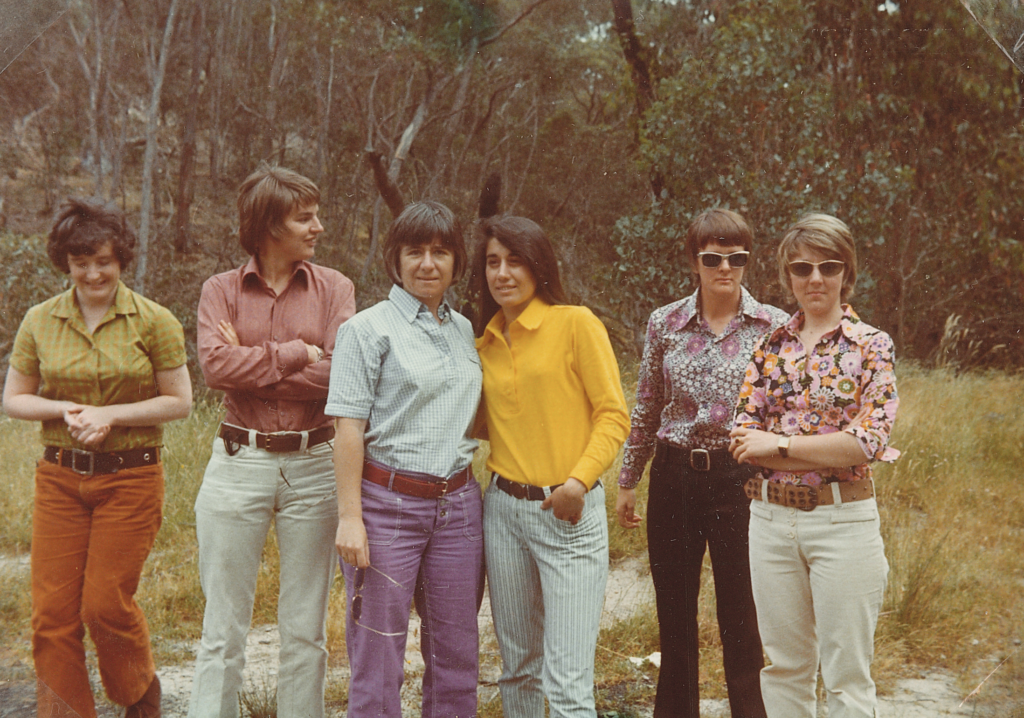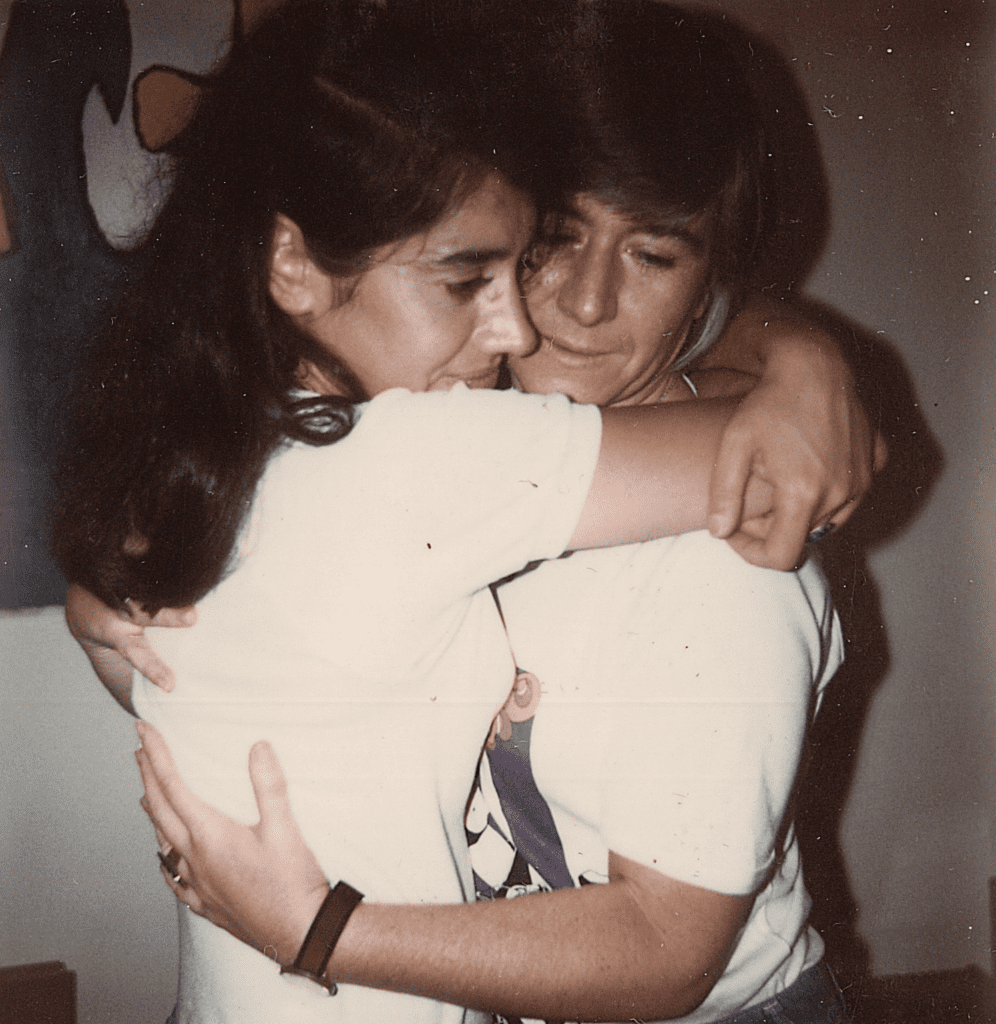她为何要告知全世界
Why Did She Have To Tell The World?

导演|艾比·波乔伊
编剧|艾比·波乔伊
主演| 菲利斯·帕普斯、弗朗西斯卡·柯蒂斯
制片人|邦妮·斯科特
摄影|费利西亚·史密斯
类型|纪录片
时长|27分钟
完成时间|2021年
对白语言|英语
字幕|英语
地区|澳大利亚
制片公司|无
(注:以下文章中有一个疑问,两位主人公是跨性男、非二元性别者,同时也被称为第一对在国家电视台上公开身份的女同性恋,在翻译过程中,they/them究竟是译为他们还是她们,以及关于两人之间的关系,校对过程中将“夫妇/妇妇”统一改为了中性词汇“伴侣”,待商榷。)
故事梗概
弗朗西斯卡·柯蒂斯和菲利斯·帕普斯有着很多身份——研究人员、作家、极端女权主义者、生活伴侣。她们也是50年前第一对在国家电视台上公开身份的女同性恋。1970年10月,菲利斯和弗朗西斯卡冒着一切风险,参加了美国广播公司“今日今夜”节目关于女同性恋的采访。自那次露面后,这对伴侣出人意料地成为了变革的代言人,也成为澳大利亚第一个同性恋政治权利组织“比利提斯的女儿”(Daughters of Bilitis)的成员,该组织现在被称为澳大利亚女同性恋运动(Australasian Lesbian Movement),它是第一个为女同性恋提供公开谈论自己性取向的论坛。如今,在菲利斯和弗朗西斯卡生命的最后几年里,随着健康问题的出现,在为时未晚之前,她们致力于突破那些不愿承认她们性取向的人们所设置的种种障碍。随着她们跨越了几十年的故事以及LGBTQIA+新一代的出现,这对伴侣揭露了她们对澳大利亚历史上最大的转变之一的贡献,也揭示了接纳性少数群体在她们生活中的重要性。菲利斯和弗朗西斯卡不想隐藏她们的身份认同,在国家保障婚姻平等和一个充满希望的未来时,她们完成了最后一次出柜。
导演介绍
艾比•波乔伊(她们,they/them)是跨性男、非二元性别作家,导演和纪录片制作人。儿时成长于墨尔本和北昆士兰,艾比的作品聚焦于从各个方面讲述澳大利亚的故事。其作品得到了墨尔本时代报(The Age)、Stronger Than Fiction、RUUSH Magazine和Global Citizen的认可,最近还被拜伦湾国际电影节提名为“年度澳大利亚青年电影制作人”。
导演阐述
这部纪录片从一段友谊开始。大约三年前,我深入到澳大利亚同性恋解放运动(Gay Liberation)的世界,我的生活渐渐开始以发现我的酷儿身份源于何处为中心。有天,我收到了菲利斯·帕普斯和弗朗西斯卡·柯蒂斯发的邮件,里面提到听说我在研究她们的经历。作为第一对在澳大利亚电视上公开出柜的女同性恋伴侣,从我听到她们的故事的那一刻起,就被她们的勇气惊到了。菲利斯和我通了电话,决定不纠结于过去。
一年半后,我坐在澳大利亚女同性恋女权主义者芭布·克里德的休息室里,查找我们刚拍摄的一部纪录片的素材,它有关菲利斯和弗朗西斯卡出柜、她们的恋爱关系还有生活故事。当我们浏览首个澳大利亚女同性恋运动早期的照片、书籍和录像时,芭布为所有丢失的档案日期感到抱歉。当她回忆起自己出柜的时候,她说:
“我们都在想,自己能留下什么历史?”
在那一刻,我意识到我们的电影不仅仅是关于菲利斯和弗朗西斯卡的故事,而是对上世纪70年代澳大利亚许多女性为自己性取向抗争以及那些正在抗争的同性恋者的杰出再现。
2019年底,经过与菲利斯和弗朗西斯卡的无数次旅行、采访和电话交谈,我们有了近三年的友谊和一部完成的电影,但这还是第一次向观众讲述她们的故事。


Director|AP Pobjoy
Screenwriter|AP Pobjoy
Cast|Phyllis Papps, Francesca Curtis
Producer|Bonny Scott
Cinematographer|Felicia Smith
Genre|Documentary
Length|27min
Year|2021
Dialogue|English
Subtitles|English
Region|Victoria
Production Company|Australia
Synopsis
Francesca Curtis and Phyllis Papps are many things. Researchers. Writers. Ultra-Feminists. Partners. They are also the first lesbian couple to come out on national television almost fifty years ago. Putting everything on the line, Phyllis and Francesca appeared on ABCTV ‘This Day Tonight’s interview about lesbianism in October 1970. Since that appearance, the couple unpredictably became the public face of change, becoming members of Australia’s first gay political rights group, the Daughters of Bilitis, now known as the Australasian Lesbian Movement. The Australasian Lesbian Movement was the first forum for lesbian women to open up and speak about their sexualities. Now in the last years of their lives and with health problems looming, Phyllis and Francesca shine light on the barriers that still stop them from being seen as who they are before it is too late. With their story spanning decades and a new LGBTQIA+ generation emerging, the couple uncover their contribution to one of the biggest shifts in Australian history, and also open up about the importance of acceptance in their lives. Refusing to become invisible, Phyllis and Francesca come out for the final time whilst the country secures marriage equality and a hopeful future.
Director Biography
AP Pobjoy (they/them) is a trans masculine non-binary writer, director and documentary-maker. Growing up between Melbourne and Far North Queensland, AP’s work focuses on outnumbered perspectives with a passion for Australian storytelling. Their work has been recognised by The Age, Stronger Than Fiction, RUUSH Magazine and Global Citizen and was recently nominated for BBFF’s ‘Young Australian Filmmaker of the Year’.
Director’s Statement
This documentary started with a friendship. Almost three years ago, I had dived into the world of Australia’s Gay Liberation and my life revolved around uncovering where my queer identity came from. One day amongst all this, Phyllis Papps and Francesca Curtis flew into my email inbox hearing I was researching about their experiences. As the first lesbian couple to come out on Australian television publicly, their bravery stunned me from the moment I heard their story. Phyllis and I spoke on the phone and never looked back.
A year and a half later I was sitting in the lounge room of Australian lesbian feminist Barb Creed, searching through archive that would be used in a documentary we had started, following Phyllis and Francesca’s coming out, their relationship and life stories. As we moved through photographs, books and footage of the early days of the first Australian lesbian movement, Barb apologised for all the missing dates. She said, remembering coming out herself:
“We all thought, who are we to have a history?”
At that moment, I realised that our film was not just Phyllis and Francesca’s story, but a prominent re-telling of many women battling with their sexualities in 1970s Australia, and who came out the other end fighting today.
At the end of 2019, after countless trips, interviews and phone calls with Phyllis and Francesca, we had come up to almost three years of friendship and a completed film, telling their story for the very first time.
